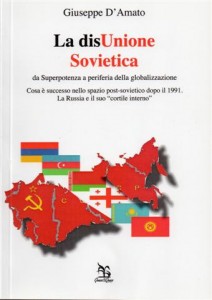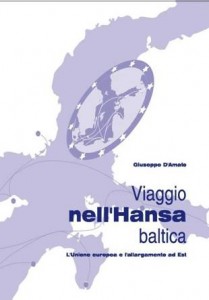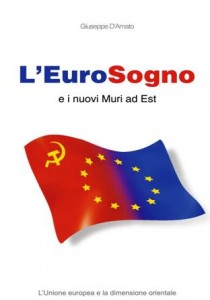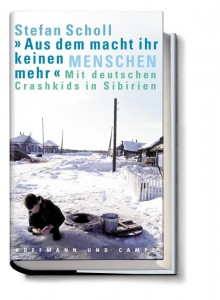Archive for November, 2010
Moldova, a Romanian region in 25 years.
30 Nov 2010“In the next 25 years Romania and Moldova could be united again,” Romanian President Traian Basescu said in an article edited in Romanian newspaper Romania Libera. “EU borders will extend to the Dnestr River, and the democratic development in the region will be an incentive for other countries, such as Ukraine, to join the EU,” the president added. “The Balkans will become part of the EU and NATO within 25 years.”
La soluzione della crisi politica moldava appare ancora lontana. I risultati delle parlamentari non hanno assegnato chiare vittorie. Il Partito comunista, la formazione più votata, ha ottenuto 42 mandati contro i 43 precedenti, i liberal-democratici del premier Filat 32 (ne avevano 18), quello democratico dell’ex speaker Lupu 15 (13) e i liberali di Ghimpu 12 (15). Le altre 16 compagini che hanno partecipato al voto non hanno superato la barriera del 4%. L’affluenza alle urne si è attestata al 58,9%. All’estero hanno votato oltre 30mila moldavi, una decina erano i seggi aperti in Italia.
La coalizione liberale controlla 59 seggi su 101, 6 in più rispetto alle elezioni del luglio 2009. Ne mancano 2 per poter eleggere il presidente come vuole la Costituzione. Da oltre un anno e mezzo l’ex repubblica sovietica è senza il capo dello Stato ed in una situazione di paralisi istituzionale. La prima riunione del Parlamento, appena eletto, è prevista per dopo il 28 dicembre.
La tensione a Chisinau si taglia col coltello. Il leader dei comunisti Vladimir Voronin ha accusato i partiti al governo di avergli rubato il 10% dei voti. Senza un accordo tra i partiti non sembra possibile l’elezione del presidente e la fine di questa interminabile crisi.
Risultati
PC: 32,29%
PDLM: 29,38%
PDM: 12,72%
PL: 9,96%
Lista eletti
PCRM:
1. Voronin Vladimir, 1941, MP, president of the PCRM
2. Greceayii Zinaida, 1956, former Prime Minister
3. Muntean Iurie, 1972, economist, executive secretary of the PCRM
4. Postoico Maria, 1950, MP
5. Tkachuk Mark, 1966, MP
6. Dodon Igor, 1975, MP
7. Misin Vadim, 1945, MP
8. Vitiuc Vladimir, 1972, MP
9. Vlah Irina, 1974, MP
10. Petrenco Grigore, 1980, MP
11. Balmos Galina, 1961, MP
12. Zagorodnyi Anatolie, 1973, MP
13. Ivanov Violeta, 1967, MP
14. Sova Vasilii, 1959, MP
15. Sarbu Serghei, 1980, jurist
16. Domenti Oxana, 1972, MP
17. Chistruga Zinaida, 1954, MP
18. Gagauz Miron, 1954, MP
19. Panciuc Vasilii, 1949, mayor of Balti
20. Mironic Alla, 1941, teacher
21. Bannicov Alexandr, 1962, engineer
22. Poleanschi Mihail, 1980, anthropologist
23. Stati Sergiu, 1961, historian
24. Todua Zurab, 1963, historian
25. Gorila Anatolie, 1960, engineer
26. Bodnarenco Elena, 1965, MP
27. Staras Constantin, 1971, journalist
28. Bondari Veaceslav, 1960, expert in science of commodities
29. Abramciuc Veronica, 1958, MP
30. Reidman Oleg, 1952, MP
31. Musuc Eduard, 1975, MP
32. Eremciuc Vladimir, 1951, MP
33. Garizan Oleg, 1971, MP
34. Babenco Oleg, 1968, MP
35. Mandru Victor, 1059, MP
36. Filipov Serghei, 1965, doctor’s assistant
37. Reshetnikov Artur, 1975, former SIS director
38. Shupak Inna, 1984, anthropologist
39. Botnariuc Tatiana, 1967, MP
40. Petcov Alexandr, 1972, journalist
41. Popa Gheorghe, 1956, engineer
42. Anghel Gheorghe, 1959, jurist
The PLDM:
1. Filat Vlad, 1969, jurist, president of the PLDM, Premier
2. Tanase Alexandru, 1971, jurist, first vice president of the PLDM, Minister of Justice
3. Godea Mihai, 1974, historian, first vice president of the PLDM, MP
4. Palihovici Liliana, 1971, historian, vice president of the PLDM, MP
5. Leanca Iurie, 1963, Deputy Prime Minister, Minister of Foreign Affairs and European Integration
6. Belostencinic Grigore, 1960, economist, rector of the Academy of Economic Sciences
7. Hotineanu Vladimir, 1950, doctor, surgeon, Minister of Health
8. Juravschi Nicolae, 1964, chairman of the Olympic Committee
9. Tap Iurie, 1955, teacher, deputy Head of Parliament
10. Bolocan Lilia, 1972, teacher, AGEPI head
11. Ghiletchi Valeriu, 1960, MP
12. Sleahtitchi Mihai, 1956, MP, lecturer
13. Agache Angela, 1976, MP
14. Balan Ion, 1962, agronomist, MP
15. Deliu Tudor, 1955, MP
16. Ionita Veaceslav, 1973, MP, economist
17. Strelet Valeriu, 1970, jurist, historian, MP
18. Furdui Simion, 1963, historian, MP
19. Lucinschi Chiril, 1970, diplomat, businessman
20. Mocanu George, 1982, economist, head of the State Chancellery’s Local Administration Division
21. Cobzac Grigore, 1959, engineer, MP
22. Cimbriciuc Alexandru, 1968, jurist, MP
23. Butmalai Ion, 1964, jurist, MP
24. Ciobanu Ghenadie, 1957, teacher, composer, MP
25. Olaru Nicolae, 1958, MP
26. Ionas Ivan, 1956, engineer, MP
27. Plesca Nae-Simion, 1955, philologist, businessman
28. Dimitriu Anatolie, 1973, jurist
29. Ciobanu Maria, 1953, teacher
30. Vlah Petru, 1970, jurist, a member of the People’s Assembly of Gagauzia
31. Vacarciuc Andrei, 1952, head of Cimislia district
32. Stirbate Petru, 1960, doctor
The PD:
1. Lupu Marian, 1966, economist, MP, the president of the PDM
2. Plahotniuc Vladimir, 1966, engineer, businessman
3. Lazar Valeriu, 1968, Minister of Economy, vice president of the PDM
4. Corman Igor, 1969, historian, diplomat, vice president of the PDM
5. Diacov Dumitru, 1952, journalist, MP, president of honor of the PDM
6. Raducan Marcel, 1967, Minister of Construction and Regional Development
7. Candu Andrian, 1975, jurist, entrepreneur, director general
8. Buliga Valentina, 1961, Minister of Labor, Social Protection and Family
9. Filip Pavel, 1966, director general, SA Tutun-CTC
10. Botnari Vasile, 1975, economist
11. Stoianoglo Alexandru, 1967, MP
12. Apolschii Raisa, 1964, lawyer
13. Bolboceanu Iurie, 1959, unemployed
14. Guma Valeriu, 1964, economist, MP
15. Ghilas Anatolie, 1957, engineer, MP
The PL:
1. Ghimpu Mihai, 1951, jurist, chairman of the PL, Head of Parliament and Moldova’s Acting President
2. Salaru Anatolie, 1962, doctor, Minister of Transport
3. Fusu Corina, 1959, journalist, MP
4. Hadarca Ion, 1949, philologist, writer, MP
5. Munteanu Valeriu, 1980, jurist, MP
6. Bodrug Oleg, 1965, physician, editor, MP
7. Vieru Boris, 1957, philologist, MP
8. Lupan Vladimir, 1971, diplomat, physician, presidential adviser
9. Popa Victor, 1949, jurist, teacher at the Free International University
10. Cojocaru Vadim, 1961, economist, MP
11. Gutu Ana, 1962, philologist, MP
12. Brega Gheorghe, 1951, doctor, MP.
Россия. Медведев, риск “застоя”.
30 Nov 2010«Мрачный, но абсолютно верный диагноз сегодняшнему состоянию нашей политической системы поставил президент Дмитрий Медведев. Впервые с самого верха прозвучало хлесткое слово “застой”. В наш прошлый “период стабильности” услышать что-то подобное из уст генсека Брежнева было делом абсолютно немыслимым. И это внушает надежды, что в 2010-м мы еще не завязли так сильно, как, например, в 1980-м. Но вот только последует ли за диагнозом лечение?»
Статья – Московский Комсомолец № 25508 от 25 ноября 2010 г. Михаил Ростовский
Mikhail Rostovsky Moskovskij Komsomolets
Confident for the euro, Russia and Europe may join single currency someday in the future. Mr. Vladimir Putin took part in the German – Russian summit in Berlin. The euro has proven itself “a stable world currency,” Russian Prime Minister said. “We have to get away from the overwhelming dollar monopoly. It makes the world economy vulnerable,” Putin added. Earlier in a letter edited by a German newspaper the former President wrote “We should be frank about it: The global economic crisis has revealed both Russia and the EU to be economically very vulnerable.” Mr. Putin suggested to create a free-trade zone.
Mrs. Angela Merkel called that a “vision for the future,” and stressed the need for close economic cooperation as a first step. “But the closer our economies are linked, the easier and the more interesting it will be to adjust also the currency policy,” the German Chancellor said. In the meantime, Mrs. Merkel added, Moscow had to conclude talks to join the W.T.O. Russia, which opened its bid to join the WTO in 1993, is the last major world power not a member of the Geneva-based global trade body.
Mr. Putin expressed criticism to the Third Energy Package. Agreed in 2009, it was designed to liberalize the EU’s energy markets by separating the production and distribution networks of large energy companies to foster more competition. The other element of the package allowed smaller energy companies access to the grids, which had been blocked by the big companies. “Our companies, together with German partners, legally acquired distribution assets in Lithuania,” Mr. Putin said. “Now they are being thrown out there with reference to the Third Energy Package. What is this then? What is this robbery?”
E’ la fine definitiva di una delle più terribili bugie della Seconda guerra mondiale. La Russia si libera del peso di un’infamia spaventosa. La “tragedia” di Katyn, dove nella primavera del 1940 furono passati per le armi circa 22mila polacchi, fu opera dell’Unione Sovietica. “Tutti i materiali, per anni rimasti negli archivi – si legge in un documento ufficiale approvato dalla Duma, la Camera bassa del Parlamento federale, – testimoniano che il massacro è stato compiuto da Stalin e da altri dirigenti sovietici”.
Per decenni l’Urss addossò la responsabilità dell’eccidio ai nazisti. I carnefici uccisero le proprie vittime con colpi di pistola di fabbricazione tedesca nel cranio. Le prime parziali ammissioni, che la verità “ufficiale” non era quella, giunsero negli ultimi anni della perestrojka con Gorbaciov. Fu, però, Boris Eltsin, che trasmise parte dei documenti d’archivio a Varsavia, a porgere le scuse del suo Paese, anch’esso uscito prostrato dalla repressione comunista. Katyn, purtroppo, era soltanto una tragica goccia nel mare di sangue dei popoli sovietici, provocato dallo stalinismo.
Dopo il Duemila i rapporti russo-polacchi sono diventati sempre più tesi. La ragione primaria del contendere era di carattere storico. Troppi i buchi neri nelle relazioni fra i due popoli slavi, avversari o nemici nel corso dei secolo. Katyn, in particolare, continuava a pesare come un macigno.
All’inizio della primavera scorsa Mosca ha finalmente scelto la strada della piena collaborazione con Varsavia. L’obiettivo era quello di estirpare, una volta per tutte, una delle più dolorose spine nel fianco della propria politica estera. I polacchi, ad esempio, avevano accordato la propria disponibilità agli Stati Uniti per la dislocazione di siti del cosiddetto “Scudo spaziale” sul proprio territorio in funzione anti-russa. Varsavia creava problemi al processo di avvicinamento di Mosca all’Unione europea.
La sciagura di Smolensk ha ulteriormente accelerato gli eventi. Le immagini televisive di Putin e Medvedev con le lacrime agli occhi, abbracciati con i superstiti della dirigenza polacca, davanti ai resti dell’aereo del presidente Kaczynski hanno aiutato a sfondare definitivamente il muro della reciproca diffidenza. Mosca ha accolto in maggio sulla Piazza Rossa un drappello di ufficiali polacchi che hanno sfilato, insieme ai militari della Nato, in ricordo della vittoria nella Seconda guerra mondiale. Un onore del genere era impensabile soltanto nell’estate del 2008.
Quello della Duma – ha commentato il premier polacco Donald Tusk – “è un gesto politico importante”. I due Paesi hanno ormai compreso che è venuto il tempo di voltare pagina e di essere stati entrambi vittime del totalitarismo del XX secolo.
In Ricerca scrivi “Katyn” per altri articoli.
The figure towering over the town of Swiebodzin is 33 meters high – with a three meter golden crown and 16 meter high mound on which the statue stands, the total height is 52 meters, making it higher than the famous Christ the Redeemer statue in Rio de Janeiro, which is 38 meters tall.
The entire construction weighs about 440 tons.
Thousands of believers attended the unveiling and consecration of the white plaster and fiberglass figure, which is the brain child of local priest Sylwester Zawadzki.
“It’s fantastic. That’s the word which perhaps describes best what I can see here,” said an admiring woman at the ceremony on Sunday.
But the imposing figure has divided Poles. Critics say it is too big, bordering on megalomania and that the money could have been better spent.
The authorities in Swiebodzin, a town with a population of 22,000, hope that the majestic figure of Jesus Christ will attract pilgrims and tourists, bringing IN money and enlivening the local market. The figure can be seen by motorists on the Warsaw-Berlin motorway.
Source: PAP
ARTICLE – AFP
Только модернизация спасет Россию!
22 Nov 2010«Европа, точнее, старая Европа, подыхает. Потихонечку, но обязательно. Я узнал об этом впервые, будучи студентом и владея русским языком уже достаточно хорошо, чтобы читать “Правду” и другие советские газеты…
И все-таки Европу уже никто не спасет. Во всяком случае так говорят мои нынешние русские знакомые, которые не раз совершали туры в Шенгенскую зону. Говорят, что вслед за Советским Союзом старуха-Европа переживает предсмертный застой. Беззубая прабабушка болеет — и слишком большим терпением к секс-меньшинствам, и слишком педантичной политкорректностью… Бюргерам, короче, скоро капут…
Давайте посмотрим на этот бюргерский беспредел русскими глазами…»
–
Штефан Шолль статья Московский Комсомолец № 25500 от 16 ноября 2010 г.
Stefan Scholl Moskovskij Komsomolets
Primi passi concreti verso un mondo più sicuro. Gli ex nemici della Guerra Fredda iniziano seriamente a collaborare tra loro. L’intesa politica tra Nato e Russia si appoggia principalmente su due elementi: sviluppo comune di un mini-Scudo regionale; aiuto nel disinnescare la mina afghana.
Ma prima la nuova Concezione strategica della Nato la cui definizione – come ha candidamente ammesso in conferenza stampa a Lisbona il presidente Medvedev – Mosca ha seguito nei mesi scorsi con estrema “attenzione”. Nel documento si legge che l’Alleanza atlantica “non rappresenta una minaccia per la Russia”, anzi “cerca con lei cooperazione”. Questa collaborazione è “strategicamente importante, poiché contribuisce alla creazione di un comune spazio di pace, stabilità e sicurezza”.
Il capo del Cremlino ha dichiarato che complessivamente nella Concezione strategica della Nato si esprimono bene i nuovi rapporti con il suo Paese. La speranza russa è che questo momento positivo nelle relazioni Est – Ovest non sia un semplice “venticello” passeggero come già avvenuto in altre occasioni in passato.
Ecco perché Mosca ha accettato le offerte occidentali di cooperazione, ma non si fida più di tanto. La principale preoccupazione è rappresentata dalla complessa ratifica dello Start da parte del Senato Usa. “Faremo le cose in maniera simmetrica”, ha ammonito Medvedev, che ha sottolineato come il mancato voto favorevole al trattato dei parlamentari statunitense “non renderà il mondo più sicuro”.
Veniamo al mini-Scudo. Ormai non si parla più, come ai tempi di Bush, di Scudo spaziale strategico, quello per intenderci contro i vettori a lungo raggio, ma di difese anti-missilistiche regionali contro minacce portate da piccola e media distanza. La Nato ha inviato a Mosca, alcune settimane fa, i suoi esperti per definire tecnicamente come unire il proprio sistema con quello russo. Nei prossimi mesi il lavoro proseguirà con ufficialmente la benedizione del duo Medvedev-Putin.
Le cose non vanno troppo bene in Afghanistan, dove, da anni, la Nato sta levando le castagne dal fuoco alle repubbliche ex sovietiche. Anche durante le settimane più oscure della crisi tra Bush ed il Cremlino la Russia non ha mai cancellato il permesso di transito di materiale logistico alleato verso l’Asia centrale.
Invero Mosca da quelle terre sfortunate non ha mai distolto l’attenzione. Ad iniziare dall’autunno ’96 dopo che i talebani presero il potere a Kabul. Il Cremlino convocò una riunione d’emergenza delle repubbliche ex Urss asiatiche per organizzare la difesa dello spazio ex sovietico. I successivi attacchi islamici in Tagikistan, Kirghizistan ed Uzbekistan e le infiltrazioni in Caucaso settentrionale le diedero ragione.
Adesso che è stata annunciato l’inizio di una “exit-strategy” dall’Afghanistan dal 2011 al 2014 la preoccupazione nell’ex Urss torna a salire. Una voce, che si rincorre, è che qualcuno in Occidente pensi addirittura di ripassare il boccone avvelenato afghano al Cremlino. Medvedev ha ricordato come la situazione interna di quel Paese “rappresenta una minaccia per il mondo circostante”.
Tornando a Lisbona, dove è stata a più riprese utilizzata la parola “partner”, i russi hanno concesso ufficialmente maggiore libertà di transito per il rientro delle truppe Nato tra il 2011 ed il 2014. Ma gli occidentali si aspettano un ruolo molto più attivo del Cremlino.
Certo è che se la Russia vorrà rimanere una potenza regionale dovrà fare la sua parte anche nei teatri scomodi. Il problema è se l’ex superpotenza ha dentro di sé la forza morale e materiale per un tale compito.
Giuseppe D’Amato
NATO Strategic Concept.
US President Barack Obama: the agreement “responds to the threats of our times”.
“For the first time, we have agreed to develop a missile defence capability that’s strong enough to cover all NATO European territory and populations, as well as the United States.”
The document commits NATO members “to defend one another against attack, including against new threats to the safety of our citizens”, without defining a geographical limit to its theatre of operations. The alliance would also seek to “create the conditions” for a world without nuclear weapons, but until that goal was in sight would remain a nuclear-armed organisation.
Polish President Bronislaw Komorowski called the new NATO strategic concept as “satisfactory for Poland”.
Russia.
German Chancellor Angela Merkel: “A former military adversary is now clearly a partner.”
US President Barack Obama: “We look forward to working with Russia to build our cooperation with them in this area (anti-missile Shield) as well recognizing that we share many of the same threats.”
Ratification of the new START weapons treaty.
Obama: “Those who would block this treaty are breaking President Reagan’s rule — they want to trust, but not verify.”
* * *
From the NEW official NATO Strategic Concept. – NATO and RUSSIA –
* PAGE 5. We will actively seek cooperation on missile defence with Russia and other Euro-Atlantic partners;
* PAGE 7-8. In any future reductions, our aim should be to seek Russian agreement to increase transparency on its nuclear weapons in Europe and relocate these weapons away from the territory of NATO members. Any further steps must take into account the disparity with the greater Russian stockpiles of short-range nuclear weapons.
* PAGE 10 – POINT 33 NATO-Russia cooperation is of strategic importance as it contributes to
creating a common space of peace, stability and security. NATO poses no threat to Russia. On the contrary: we want to see a true strategic partnership between NATO and Russia, and we will act accordingly, with the expectation of reciprocity from Russia.
* PAGE 10 – POINT 34 The NATO-Russia relationship is based upon the goals, principles and
commitments of the NATO-Russia Founding Act and the Rome Declaration, especially regarding the respect of democratic principles and the sovereignty, independence and territorial integrity of all states in the Euro-Atlantic area. Notwithstanding differences on particular issues, we remain convinced that the security of NATO and Russia is intertwined and that a strong and constructive partnership based on mutual confidence, transparency and predictability can best serve our security. We are determined to:
• enhance the political consultations and practical cooperation with Russia in areas of shared interests, including missile defence, counter-terrorism, counter-narcotics, counter-piracy and the promotion of wider international security;
• use the full potential of the NATO-Russia Council for dialogue and joint action with Russia.
Каспийский регион: море проблем.
19 Nov 2010«Главной темой саммита прикасписйских стран стала безопасность. Именно от решения вопросов, связанных с безопасностью, зависит решение самой главной проблемы в “каспийской повестке” – определении политико-правового статуса Каспийского моря...
…Для политиков, дипломатов и экспертов Каспийское море давно уже представляет собой настоящий океан проблем, где безбрежные горизонты сотрудничества соседствуют с не менее безбрежными горизонтами проблем….
…Среди тревожных тенденций, которые сегодня наблюдаются, следует назвать процесс дальнейшей милитаризации Каспийского моря, проблему сохранения биоразнообразия Каспия, малорезультативность борьбы с браконьерством, высокие риски возникновения в регионе экологических катастроф.
…ситуация на Севере Каспия и на Юге значительно отличается. Отличительной чертой Северного участка Каспия является то, что Азербайджану, Казахстану и России удалось договориться на юридической основе о принципах взаимодействия. В 2003 году они подписали соглашение о точке стыка линий разграничения сопредельных участков дна Каспийского моря. Документ на уровне заместителей министров иностранных дел узаконил (в трехстороннем формате) правовой статус около 60% недр акватории моря. А вот на Юге развитие диалога упирается, главным образом, в позицию Ирана, выступающего за равнодолевое разделение Каспийского моря.
..Каспий, являющийся крупным геополитическим узлом, вызывает оживленный интерес европейских стран, Турции и США. Есть мнения, что внедрение в регион этих крупнейших игроков будет препятствовать распределению ресурсов и разделу Каспийского моря….
..Сегодня задачей, в первую очередь, таких стран как Азербайджан, Казахстан и Туркменистан является оптимизация присутствия внешних, в том числе и политических игроков в Каспийском регионе. Сделать так, чтобы их присутствие не становилось тормозом для развития собственного сотрудничества прикаспийских стран во всех сферах и направлениях».
Мнение – Ильгар Велизаде, политолог (Баку) – РИА Новости.
Welcome
We are a group of long experienced European journalists and intellectuals interested in international politics and culture. We would like to exchange our opinion on new Europe and Russia.
Categories
- Breaking News (11)
- CIS (129)
- Climate (2)
- Energy&Economy (115)
- EU Eastern Dimension (85)
- Euro 2012 – Sochi 2014 – World Cup 2018, Sport (43)
- Euro-Integration (135)
- History Culture (198)
- International Policy (261)
- Military (74)
- Interviews (18)
- Italy – Italia – Suisse (47)
- Odd Enough (10)
- Poland and Baltic States (126)
- Religion (31)
- Russia (421)
- Survey (4)
- Turning points (4)
- Ukraine (176)
- Российские страницы (113)
Archives
- November 2020
- October 2020
- September 2020
- August 2020
- July 2020
- May 2020
- April 2020
- March 2020
- January 2020
- December 2019
- November 2019
- October 2019
- September 2019
- August 2019
- July 2019
- June 2019
- May 2019
- April 2019
- March 2019
- February 2019
- December 2018
- November 2018
- October 2018
- September 2018
- August 2018
- July 2018
- June 2018
- May 2018
- April 2018
- March 2018
- February 2018
- January 2018
- December 2017
- November 2017
- October 2017
- September 2017
- August 2017
- July 2017
- May 2017
- March 2017
- January 2017
- December 2016
- November 2016
- October 2016
- September 2016
- July 2016
- June 2016
- May 2016
- April 2016
- February 2016
- January 2016
- November 2015
- October 2015
- September 2015
- June 2015
- April 2015
- March 2015
- February 2015
- January 2015
- December 2014
- November 2014
- October 2014
- September 2014
- August 2014
- July 2014
- June 2014
- May 2014
- April 2014
- March 2014
- February 2014
- January 2014
- December 2013
- November 2013
- October 2013
- September 2013
- August 2013
- July 2013
- June 2013
- May 2013
- April 2013
- March 2013
- February 2013
- January 2013
- December 2012
- November 2012
- October 2012
- September 2012
- August 2012
- July 2012
- June 2012
- May 2012
- April 2012
- March 2012
- February 2012
- January 2012
- December 2011
- November 2011
- October 2011
- September 2011
- August 2011
- July 2011
- June 2011
- May 2011
- April 2011
- March 2011
- February 2011
- January 2011
- December 2010
- November 2010
- October 2010
- September 2010
- August 2010
- July 2010
- June 2010
- May 2010
- April 2010
- March 2010
- February 2010
- January 2010
- December 2009
- November 2009
- October 2009
- September 2009
- August 2009
Our books




